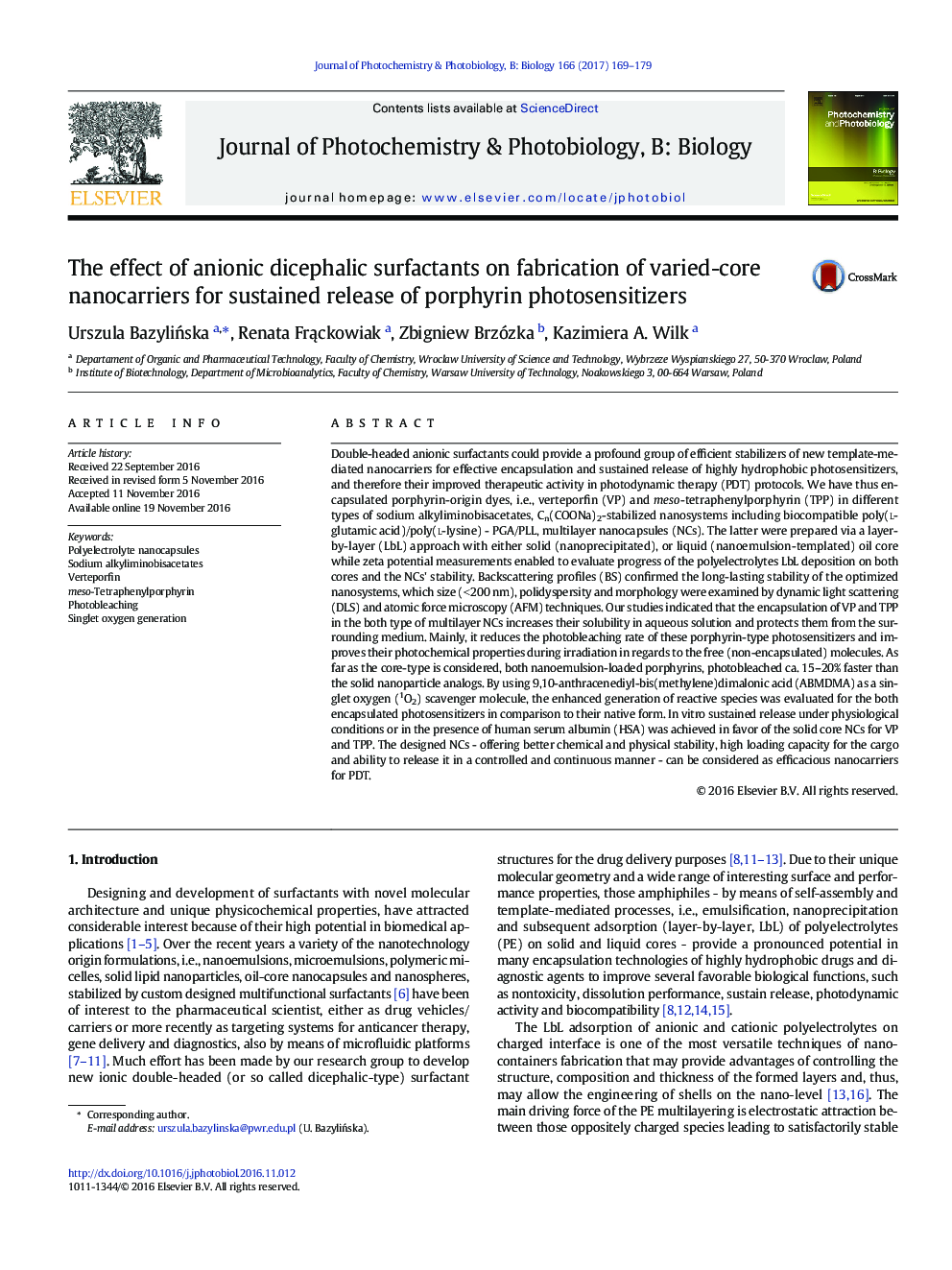| کد مقاله | کد نشریه | سال انتشار | مقاله انگلیسی | نسخه تمام متن |
|---|---|---|---|---|
| 4754570 | 1418067 | 2017 | 11 صفحه PDF | دانلود رایگان |

- Verteporfin (VP) and meso-tetraphenylporphyrin (TPP) were encapsulated by Cn(COONa)2-stabilized nanocarriers with varied core
- The long-term stability of the nanosystems with PLL/PGA shell were characterized through Zeta Potential and BS profiles
- UV-vis spectroscopy established encapsulation, photodynamic activity and in vitro release profiles of VP and TPP
- The encapsulated porphyrins exhibited much better photostability and photodynamic action than free photosensitizers
- DLS, AFM and TEM indicated desired nanocarriers size for potential tumor delivery
Double-headed anionic surfactants could provide a profound group of efficient stabilizers of new template-mediated nanocarriers for effective encapsulation and sustained release of highly hydrophobic photosensitizers, and therefore their improved therapeutic activity in photodynamic therapy (PDT) protocols. We have thus encapsulated porphyrin-origin dyes, i.e., verteporfin (VP) and meso-tetraphenylporphyrin (TPP) in different types of sodium alkyliminobisacetates, Cn(COONa)2-stabilized nanosystems including biocompatible poly(l-glutamic acid)/poly(l-lysine) - PGA/PLL, multilayer nanocapsules (NCs). The latter were prepared via a layer-by-layer (LbL) approach with either solid (nanoprecipitated), or liquid (nanoemulsion-templated) oil core while zeta potential measurements enabled to evaluate progress of the polyelectrolytes LbL deposition on both cores and the NCs' stability. Backscattering profiles (BS) confirmed the long-lasting stability of the optimized nanosystems, which size (<Â 200Â nm), polidyspersity and morphology were examined by dynamic light scattering (DLS) and atomic force microscopy (AFM) techniques. Our studies indicated that the encapsulation of VP and TPP in the both type of multilayer NCs increases their solubility in aqueous solution and protects them from the surrounding medium. Mainly, it reduces the photobleaching rate of these porphyrin-type photosensitizers and improves their photochemical properties during irradiation in regards to the free (non-encapsulated) molecules. As far as the core-type is considered, both nanoemulsion-loaded porphyrins, photobleached ca. 15-20% faster than the solid nanoparticle analogs. By using 9,10-anthracenediyl-bis(methylene)dimalonic acid (ABMDMA) as a singlet oxygen (1O2) scavenger molecule, the enhanced generation of reactive species was evaluated for the both encapsulated photosensitizers in comparison to their native form. In vitro sustained release under physiological conditions or in the presence of human serum albumin (HSA) was achieved in favor of the solid core NCs for VP and TPP. The designed NCs - offering better chemical and physical stability, high loading capacity for the cargo and ability to release it in a controlled and continuous manner - can be considered as efficacious nanocarriers for PDT.
Graphical Abstract136
Journal: Journal of Photochemistry and Photobiology B: Biology - Volume 166, January 2017, Pages 169-179